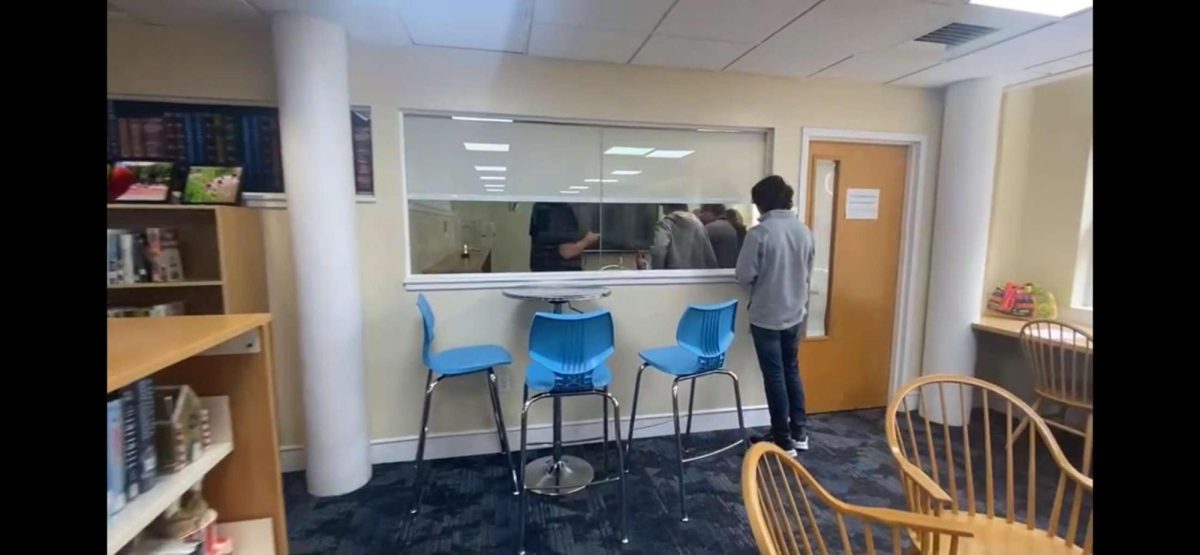When Hurricane Milton was projected to pass through Florida in mid-October, RE students found themselves wondering whether it might force a return to online coursework.
That didn’t happen. With Milton’s impact proving to be less than expected, RE was only closed for two days, and no online learning plan was activated. In the worst case scenario, however, the school was ready to deploy new emergency learning plans developed this year.
Discussions surrounding an emergency learning plan began last summer, with faculty beginning to get involved at the start of this year to ensure that students are equipped with the tools they need to keep learning in case of an emergency.
Two emergency learning plans were created. The first is designed to address major disruptions to the school that require a transition to remote learning for an extended period of time.
The second plan is designed for smaller disruptions such as hurricanes or power outages, where not everyone in the community might have access to devices.
While the first plan might sound like a return to the days of the 2020 pandemic, Head of School Mrs. Rachel Rodriguez said that many lessons have been learned in the past four years, and the schedule has been adjusted. “I don’t think you’re ever going to get any schedule that’s perfect, but I think that our classes were too long, and homework was too long. We were sitting in one place for six hours a day, literally.”
Since the pandemic, both students and faculty members are much more familiar with digital learning platforms. RE’s two new emergency learning protocols have been made to ensure a smooth transition to remote learning and well=being of the entire school community during challenges to education.
Rodriguez added that wellness was a top priority in designing the new remote learning plan. “We have to take what we learned [from COVID] about wellness and physical activity and really take these things into consideration moving forward,” she said.
In the first emergency plan, students will continue with what they are currently working on in their classes, and teachers will move ahead with new material. That’s one of the main differences between the first plan and the second plan, which is designed to be enacted in temporary emergencies that don’t require remote learning for more than one to two weeks.
Instead of replicating a classroom environment, the goal of the short-term plan is to keep students who are available to log in engaged and learning in any capacity amidst unpredictable circumstances.
According to Associate Head of School Dr. John King, “During the pandemic people had power. Everyone could get online, but we couldn’t be together. We were trying to replicate what we were doing at school online. This emergency learning plan is more for situations where some people might be available, some people might not be. But if you’re available, we hope that you might stay engaged within our community.”
This plan might involve simple tasks, such as reviewing past and current material or completing short assignments created by teachers. Courses with multiple sections might be consolidated for remote learning under one teacher, and for classes mandatory for the entire grade, such as 9th grade Biology, teachers would create one link for all students containing resources and material. Many teachers have already posted these Google Meet links on their MyCompass pages.
Mrs. Rodriguez emphasized that the biggest priority for the school in the event of any emergency is the safety of the RE community. “We always think about ‘how do we keep people safe?’ That has to be the first thing. Whether we are experiencing a local disaster, or more widespread emergency, the school’s primary goal is ensuring that everyone is able to continue learning under the best possible conditions.”
From the student perspective, Lillian Liu ’27 recalled the challenges of online learning four years ago. “I feel like during online [school] no one was really engaged in class, and I was sitting there not listening to anyone. There was basically no activities or engagement.”
Still, she acknowledged, “that’s why I think it’s good that we have this plan and we can learn from our mistakes.”
“During an emergency, we’re going to have to put aside our disdain for virtual learning, and we’re going to have to make the best out of a bad situation and think about how we as a community come together,” Mrs. Rodriguez said. “Schools are a place of presence and that’s what makes our community work.”












